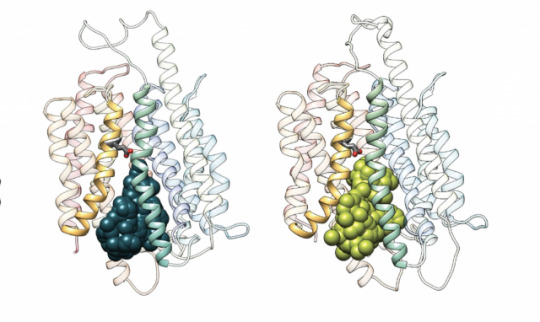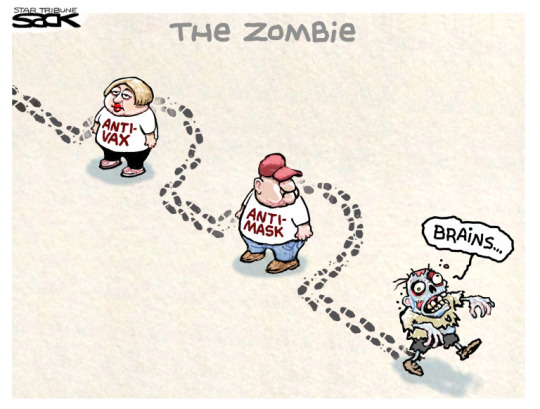Text
“Its future might be shrouded in gloom, and the hope of its prophets go out in sorrow. There is consolation in the thought that America is young. Great streams are not easily turned from channels, worn deep in the course of ages. They may sometimes rise in quiet and stately majesty, and inundate the land, refreshing and fertilizing the earth with their mysterious properties. They may also rise in wrath and fury, and bear away, on their angry waves, the accumulated wealth of years of toil and hardship. They, however, gradually flow back to the same old channel, and flow on as serenely as ever. But, while the river may not be turned aside, it may dry up, and leave nothing behind but the withered branch, and the unsightly rock, to howl in the abyss-sweeping wind, the sad tale of departed glory. As with rivers so with nations.”
— Frederick Douglass, July 5, 1852
65 notes
·
View notes
Link
36 notes
·
View notes
Link
36 notes
·
View notes
Link
24 notes
·
View notes
Text
Omega-3s May Hold Key to Unlocking Blood-Brain Barrier
Spectacular images of a molecule that shuttles omega-3 fatty acids into the brain may open a doorway for delivering neurological therapeutics to the brain.
“We’ve managed to obtain a three-dimensional structure of the transporter protein that provides a gateway for omega-3s to enter the brain. In this structure, we can see how omega-3s bind to the transporter. This information may allow for the design of drugs that mimic omega-3s to hijack this system and get into the brain,” says first author Rosemary J. Cater, PhD, a Simons Society Fellow in the Mancia Lab at Columbia University Vagelos College of Physicians and Surgeons.
The study was published online on June 16 in the journal Nature.

(Image caption: Models of MFSD2A show how the molecule transports omega-3s and other lipids into the brain. Here, two snapshots of MFSD2A show two lipids—LPC 18:3 (left) and omega-3 (right)— inside the transporter's intracellular cavity. Credit: Cater, et al. (2021))
A major challenge in treating neurological diseases is getting drugs across the blood-brain barrier—a layer of tightly packed cells that lines the brain’s blood vessels and zealously blocks toxins, pathogens, and some nutrients from entering the brain. Unfortunately, the layer also blocks many drugs that are otherwise promising candidates to treat neurological disorders.
Essential nutrients like omega-3s require the assistance of dedicated transporter proteins that specifically recognize them and get them across this barrier. “The transporters are like bouncers at a club, only letting molecules with invites or backstage passes in,” Cater says.
The transporter—or bouncer—that lets omega-3s in is called MFSD2A and is the focus of Cater’s research. “Understanding what MFSD2A looks like and how it pulls omega-3s across the blood-brain barrier may provide us with the information we need to design drugs that can trick this bouncer and gain entry passes.”
To visualize MFSD2A, Cater used a technique called single-particle cryo-electron microscopy.
“The beauty of this technique is that we’re able to see the shape of the transporter with details down to a fraction of a billionth of a meter,” says study co-leader Filippo Mancia, PhD, associate professor of physiology & cellular biophysics at Columbia University Vagelos College of Physicians and Surgeons and an expert in the structure and function of membrane proteins. “This information is critical for understanding how the transporter works at a molecular level.”
For cryo-EM analysis, protein molecules are suspended in a thin layer of ice under an electron microscope. Powerful cameras take millions of pictures of the proteins from countless angles which can then be pieced together to construct a 3D map.

(Image caption: Multiple 2D images of the omega-3 transporter were obtained with cryo-electron microscopy and used to construct a 3D map of the protein. Credit: Cater et al. (2021))
Into this map researchers can build a 3D model of the protein, putting each atom in its place. “It reminds me of solving a jigsaw puzzle,” Mancia explains. This technique has become remarkably powerful in visualizing biological molecules in recent years, thanks in part to Joachim Frank, PhD, professor of biochemistry & molecular biophysics at Columbia University Vagelos College of Physicians and Surgeons, who won the Nobel Prize in 2017 for his role in developing cryo-electron microscopy data analysis algorithms.
“Our structure shows that MFSD2A has a bowl-like shape and that omega-3s bind to a specific side of this bowl,” Cater explains. “The bowl is upside down and faces the inside of the cell, but this is just a single 3D snapshot of the protein, which in real life has to move to transport the omega-3s. To understand exactly how it works, we need either multiple different snapshots or, better yet, a movie of the transporter in motion.”
To understand what these movements might look like, a second co-leader of the study, George Khelashvili, PhD, assistant professor of physiology and biophysics at Weill Cornell Medicine, used the 3D model of the protein as a starting point to run computational simulations that revealed how the transporter moves and adapts its shape to release omega-3s into the brain. A third co-leader of the study, David Silver, PhD, professor at the Duke-NUS Medical School in Singapore and pioneer in MFSD2A biology, together with his team tested and confirmed hypotheses derived from the structure and the computational simulations on how MFSD2A works to pinpoint specific parts of the protein that are important.
The team also included researchers from the New York Structural Biology Center, the University of Chicago, and the University of Arizona, all using their specific skills to make this project possible.
The team is now investigating how the transporter first recognizes omega-3s from the bloodstream. “But our study has already given us tremendous insight into how MFSD2A delivers omega-3s to the brain, and we are really excited to see where our results lead to,” Cater says.
79 notes
·
View notes
Text
That Song Is Stuck in Your Head, but It’s Helping You to Remember
So, no one told you life was going to be this way.
Your job's a joke, you're broke, your love life's DOA.
It's like you're always stuck in second gear,
When it hasn't been your day, your week, your month or even your year…
If you have watched TV since the ’90s, the sitcom theme song, “I’ll Be There For You,” has likely been stuck in your head at one point or another. New research from UC Davis suggests these experiences are more than a passing nuisance — they play an important role in helping memories form, not only for the song, but also related life events like hanging out with friends — or watching other people hang with their friends on the ’90s television show, Friends.
“Scientists have known for some time that music evokes autobiographical memories, and that those are among the emotional experiences with music that people cherish most,” said Petr Janata, UC Davis professor of psychology and co-author on a new study.
The paper, “Spontaneous Mental Replay of Music Improves Memory for Incidentally Associated Event Knowledge,” was published online in the Journal of Experimental Psychology: General. Co-authors are Janata and Benjamin Kubit, a postdoctoral researcher in cognitive neuroscience, both of the UC Davis Department of Psychology, and Center for Mind and Brain.
This new research offers an initial glimpse into these mechanisms and, somewhat surprisingly, finds that the songs that get stuck in your head help that process of strengthening memories as they first form, the authors said. Thus, this is the first research to link two of the most common phenomena people experience with music — earworms (having a song stuck in your head) and music-evoked remembering.
For their latest study, the researchers worked with 25 to 31 different people in each of three experiments, over three different days, spaced weeks apart. Subjects first listened to unfamiliar music, and then, a week later, listened to the music again, this time paired with likewise unfamiliar movie clips. In one instance, movies were played without music. The research subjects, all UC Davis undergraduate and graduate students, were subsequently asked to remember as many details as they could from each movie as the music played. They were also quizzed about their recollection of the associated tunes and how often they experienced each of the tunes as an earworm. None of them had formal music training.
Repetition and accuracy
The results: the more often a tune played in a person’s head, the more accurate the memory for the tune became and, critically, the more details the person remembered from the specific section of the movie with which the tune was paired.
With only one week between when they saw the movie, and when they were asked to remember as many details from the movie as they could while listening to the movie soundtrack, the effect of repeatedly experiencing a tune from the soundtrack as an earworm resulted in near-perfect retention of the movie details. These people’s memories, in fact, were as good as when they had first seen the movie. Additionally, most subjects were able to report what they were typically doing when their earworms occurred, and none of them mentioned the associated movies coming to mind at those times.
“Our paper shows that even if you are playing that song in your mind and not pulling up details of memories explicitly, that is still going to help solidify those memories,” Janata said.
“We typically think of earworms as random nuisance beyond our control, but our results show that earworms are a naturally occurring memory process that helps preserve recent experiences in long-term memory,” Kubit said.
The authors said they hope the research, which is ongoing, could eventually lead to the development of nonpharmaceutical, music-based interventions to help people suffering from dementia and other neurological disorders to better remember events, people and daily tasks.
139 notes
·
View notes
Video
An ocean in the sky❤️
Shenandoah National Park really knows how to put on a Christmas show!
Whatever your holiday traditions may be, we hope you enjoy a season of peace, joy, and beautiful moments in nature.
Video by Neal Lewis, NPS. Video description: Clouds move across the dark silhouette of forested mountains.
974 notes
·
View notes
Link
47 notes
·
View notes
Photo

On Indigenous Peoples’ Day, we celebrate the cultures and history of Indigenous, Native, and Tribal communities across the nation.
It’s part of our mission to honor our trust responsibilities and special commitments to American Indians, Alaska Natives, and affiliated Island Communities.
Photo description: A multi-colored grid photo of four separate photos representing different regions across the United States: Forest, mountains, plains, and rocky mesa desert.
1K notes
·
View notes
Text
Six months ago I had a double mastectomy and started the reconstruction process to cure myself, or at least be cancer free, from DCIS. For the past six months I have felt so grateful that I found my cancer early- stage zero, estrogen and progesterone positive, but high-grade (aka fast moving) A double mastectomy was my choice, a single mastectomy was recommended by my tumor board. I remember thinking “I fed my babies, these OG breasts are liabilities at this point”. If nothing else, I knew that to be my truth day one. Well, that and trying to maintain my lighthearted approach to living. 6 weeks later, the surgery was complete.

After I was diagnosed they did all the testing - no genetic markers. Family history? My maternal grandmother had breast cancer postmenopausal in her 80s, and a paternal aunt had breast cancer when she was around my age. She had the recommended treatment at the time and survived. Other potential markers I didn’t meet the criteria for- I’m not much of a drinker. In recent years, I usually drink alcohol on vacation or at concerts. I wasn’t even aware, until I got diagnosed, that drinking seven drinks a week or 14 drinks a week increases your chance of breast cancer by, I think, between 15 and 35%, respectively. I wasn’t on birth control past 30 years old. I didn’t start my period before 12, so that also wasn’t on the breast cancer checklist. I did have children at 32 and 34, so I did check the box of having babies after 30. BUT I breastfed each for 2 years.
One of my best friends growing up, my next-door neighbor, had the same cancer. She was triple positive, just a year and a half before me. Since she also has no genetic markers or strong familial history that qualified her for early screening either, we can’t help but think that the environment that we enjoyed as kids may have something to do with it?
Honestly, there have been many ups and downs and ins and outs- the proverbial emotional roller coaster has been ridden. My foundational gratitude  during this entire process has beenbased in the education I have in contemplative practices, compassionate mindset, self compassion, resiliency etc. Along with my humans, these have been some of the most authentic, beneficial and supportive parts of my journey.
But scheisse, I have to tell you, there was something about crossing that six-month cancer free mark this past Saturday that has really unleashed an existential beast that is tearing me down, lifting me up, challenging me and releasing a tidal wave of soul shaking emotion.
As a grief therapist I know these existential experiences can be part of the process. Practice /preach is real. I feel blessed, or maybe the right word is thankful, that I have the awareness to give myself permission to be in all of it. To try and differentiate between what is it that I really want to do with my life, what I will I learn, what will I teach, what will I experience vs the “should of, could of, would of” thoughts. I don’t want to be taking my last breath when I’m 106 (that’s a story for another day) thinking my life was all wretch and no vomit(Alan Watts), only having existed on some hedonic treadmill. So, instead, what I am really appreciating is exploring in more depth, through different lenses, the elastic effect of eudaemonic and hedonic happiness. (Steven Cole UCLA)
Recently, I have been paying closer attention to the process that is unfolding. Today I feel part of my delayed emotional response has been unintentionally complicated by the fact that I didn’t need radiation, I didn’t need chemotherapy, I didn’t need hormone treatments. I was lucky. Lucky usually doesn’t feel like this though. I think that sense of feeling lucky came with a sneakily pathological asterisk that said “*you shouldn’t (aka don’t deserve to be) sad or overwhelmed, it could be a lot worse. It IS a lot worse for so many people”. But even that thought process comes with complexities- “we aren’t supposed to compare” begging the question- “Am I doing any of this right?!”
I was lucky that I always kept my mammogram appointments. I was lucky that when I went for this year‘s appointment they found microcalcifications. I was lucky that I listened to the CDC and I didn’t delay appointments because of COVID. I couldn’t feel anything upon self examination of my breasts. I was lucky that I grew up in a family who were afforded experiences that allowed them to trust doctors and their expertise. I was lucky that I also then trusted in a system that cared for me and my family. I was very lucky that I grew up having access to an unaffordable healthcare system to so many, because of who I happened to be born to and who I get to exist as.
But the weird thing is, all this luck currently has me in a solid state of existential “what the hell?“ And, honestly, this is new territory for me. As if my light heartedness and love for life has to be, somehow, mutually exclusive from any fear, sadness, confusion or worry. Well, fuck cancer and fuck that.
As I celebrated my six month cancer-free milestone with dear friends at a Dave Matthew’s Band concert in Denver, I realized that a beloved message held new meaning.
In the opening scene of Shakespeare’s “Twelfth Night” Orsino, the Duke of Illyria, is in love. In an attempt to free himself from the anguish he is experiencing, he hopes to overindulge in the music that is playing around him, musing ‘If music be the food of love, play on’ As Orsino has heard prior, when one overindulges in food, it can cure you of overeating. His goal is to overindulge with music to help rid him of his yearning, this love that tortures him. For me, if music can feed the existential beast, play on! Keep love, tame the beast.
Meanwhile, I’ll be here balancing my thoughts, listening to and seeing as much music as possible and creating memories with the people I love.

youtube
#double mastectomy#ductal carcinoma in situ#compassion#self compassion#alan watts#breast cancer#eudaimonia#early detection#fuck cancer#existential musings#existential philosophy#@amanda_gets_it_off_her_chest#mentalheathawareness#world mental health day#Youtube#musicheals
6 notes
·
View notes
Text
youtube
The Children Will Rise Up! - Nandi & Roman with Tom Morello, Jack Black and Greta Thunberg
2 notes
·
View notes
Text

Why odors trigger powerful memories
Odors evoke powerful memories, an experience enshrined in literature by Marcel Proust and his beloved madeleine.
A new Northwestern Medicine paper is the first to identify a neural basis for how the brain enables odors to so powerfully elicit those memories. The paper shows unique connectivity between the hippocampus — the seat of memory in the brain — and olfactory areas in humans.
This new research suggests a neurobiological basis for privileged access by olfaction to memory areas in the brain. The study compares connections between primary sensory areas — including visual, auditory, touch and smell — and the hippocampus. It found olfaction has the strongest connectivity. It’s like a superhighway from smell to the hippocampus.
“During evolution, humans experienced a profound expansion of the neocortex that re-organized access to memory networks,” said lead investigator Christina Zelano, assistant professor of neurology at Northwestern University Feinberg School of Medicine. “Vision, hearing and touch all re-routed in the brain as the neocortex expanded, connecting with the hippocampus through an intermediary — association cortex — rather than directly. Our data suggests olfaction did not undergo this re-routing, and instead retained direct access to the hippocampus.”
The paper, “Human hippocampal connectivity is stronger in olfaction than other sensory systems” was published in the journal Progress in Neurobiology.
In COVID-19, smell loss has become epidemic, and understanding the way odors affect our brains—memories, cognition and more—is more important than ever, Zelano noted.
“There is an urgent need to better understand the olfactory system in order to better understand the reason for COVID-related smell loss, diagnose the severity of the loss and to develop treatments,” said first author Guangyu Zhou, research assistant professor of neurology at Northwestern. “Our study is an example of the basic research science that our understanding of smell, smell loss and future treatments is built on.”
Northwestern Now offers a brief Q & A with Zelano about the importance of the sense of smell, olfactory research and the link to COVID-19.
Why do smells evoke such vivid memories?
“This has been an enduring mystery of human experience. Nearly everyone has been transported by a whiff of an odor to another time and place, an experience that sights or sounds rarely evoke. Yet, we haven’t known why. The study found the offactory parts of the brain connect more strongly to the memory parts than other senses. This is a major piece of the puzzle, a striking finding in humans. We believe our results will help future research solve this mystery.’
How does smell research relate to COVID-19?
“The COVID-19 epidemic has brought a renewed focus and urgency to olfactory research. While our study doesn’t address COVID smell loss directly, it does speak to an important aspect of why olfaction is important to our lives: smells are a profound part of memory, and odors connect us to especially important memories in our lives, often connected to loved ones. The smell of fresh chopped parsley may evoke a grandmother's cooking, or a whiff of a cigar may evoke a grandfather's presence. Odors connect us to important memories that transport us back to the presence of those people.”
What is the goal of this study?
“Loss of the sense of smell is underestimated in its impact. It has profound negative effects of quality of life, and many people underestimate that until they experience it. Smell loss is highly correlated with depression and poor quality of life.”
Most people who lose their smell to COVID regain it, but the time frame varies widely, and some have had what appears to be permanent loss. Understanding smell loss, in turn, requires research into the basic neural operations of this under-studied sensory system.
“Research like ours moves understanding of the olfactory parts of the brain forward, with the goal of providing the foundation for translational work on, ultimately, interventions.”
157 notes
·
View notes
Text
Novel Drug Prevents Amyloid Plaques, a Hallmark of Alzheimer’s Disease

In this artist’s rendering, amyloid plaques are interspersed among neurons. These aggregates of misfolded proteins disrupt and kill brain cells, and are a hallmark of Alzheimer’s disease. Photo credit: National Institute of Aging
In animal models, the new compound modulated a key enzyme, reducing or eliminating production of problematic protein fragments; human clinical trials needed
Amyloid plaques are pathological hallmarks of Alzheimer’s disease (AD) — clumps of misfolded proteins that accumulate in the brain, disrupting and killing neurons and resulting in the progressive cognitive impairment that is characteristic of the widespread neurological disorder.
In a new study, published March 2, 2021 in the Journal of Experimental Medicine (JEM), researchers at University of California San Diego School of Medicine, Massachusetts General Hospital and elsewhere have identified a new drug that could prevent AD by modulating, rather than inhibiting, a key enzyme involved in forming amyloid plaques.
In studies using rodents and monkeys, the researchers report the drug was found to be safe and effective, paving the way for possible clinical trials in humans.
“Alzheimer’s disease is an extraordinarily complex and multi-faceted condition that has, so far, defied effective treatment, let alone prevention,” said senior author Steven L. Wagner, PhD, professor in the Department of Neurosciences at UC San Diego School of Medicine. “Our findings suggest a potential therapy that might prevent one of the key elements of AD.”
“Novel Drug Prevents Amyloid Plaques, a Hallmark of Alzheimer’s Disease”
144 notes
·
View notes
Text

Seasonal Variation in Daylight Influences Brain Function
A Finnish research group has studied how seasons influence the function of the brain. Researchers at the Turku PET Centre showed that the length of daylight affects the opioid receptors, which in turn regulates the mood we experience.
Seasons have an impact on our emotions and social life. Negative emotions are more subdued in the summer, whereas seasonal affective disorder rates peak during the darker winter months. Opioids regulate both mood and sociability in the brain. In the study conducted at the Turku PET Centre, Finland, researchers compared how the length of daylight hours affected the opioid receptors in humans and rats. In the study, we observed that the number of opioid receptors was dependent on the time of the year the brain was imaged. The changes were most prominent in the brain regions that control emotions and sociability. The changes in the opioid receptors caused by the variation in the amount of daylight could be an important factor in seasonal affective disorder, says Postdoctoral Researcher Lihua Sun from the Turku PET Centre and the University of Turku.
Animal Studies Confirm the Significance of Daylight
The researchers wanted to ensure that the changes in brain function were caused by the amount of daylight and not some other factor. To achieve this, they measured the opioid receptors in rats when the animals were kept in standard conditions where only the length of daylight hours was changed. The results were similar to those observed in humans.
On the basis of the results, the duration of daylight is a particularly critical factor in the seasonal variation of opioid receptors. These results help us to understand the brain mechanisms behind seasonal affective disorder, says Professor Lauri Nummenmaa from the Turku PET Centre.
The study was conducted with Positron Emission Tomography (PET) and altogether 204 volunteers participated as subjects. A small dose of radioactive tracer that binds to the brain’s opioid receptors was injected in the subjects’ blood circulation. The decay of the tracers was measured with a PET scanner. The study is based on the AIVO database hosted by Turku University Hospital and Turku PET Centre. The database contains different in vivo molecular brain scans for extensive analyses. Furthermore, the amount of opioid receptors was studied with PET imaging of rats. Animal studies were conducted at the Central Animal Laboratory, University of Turku, with the genuine support of Professor Anne Roivainen and Dr Emrah Yatkin.
144 notes
·
View notes

